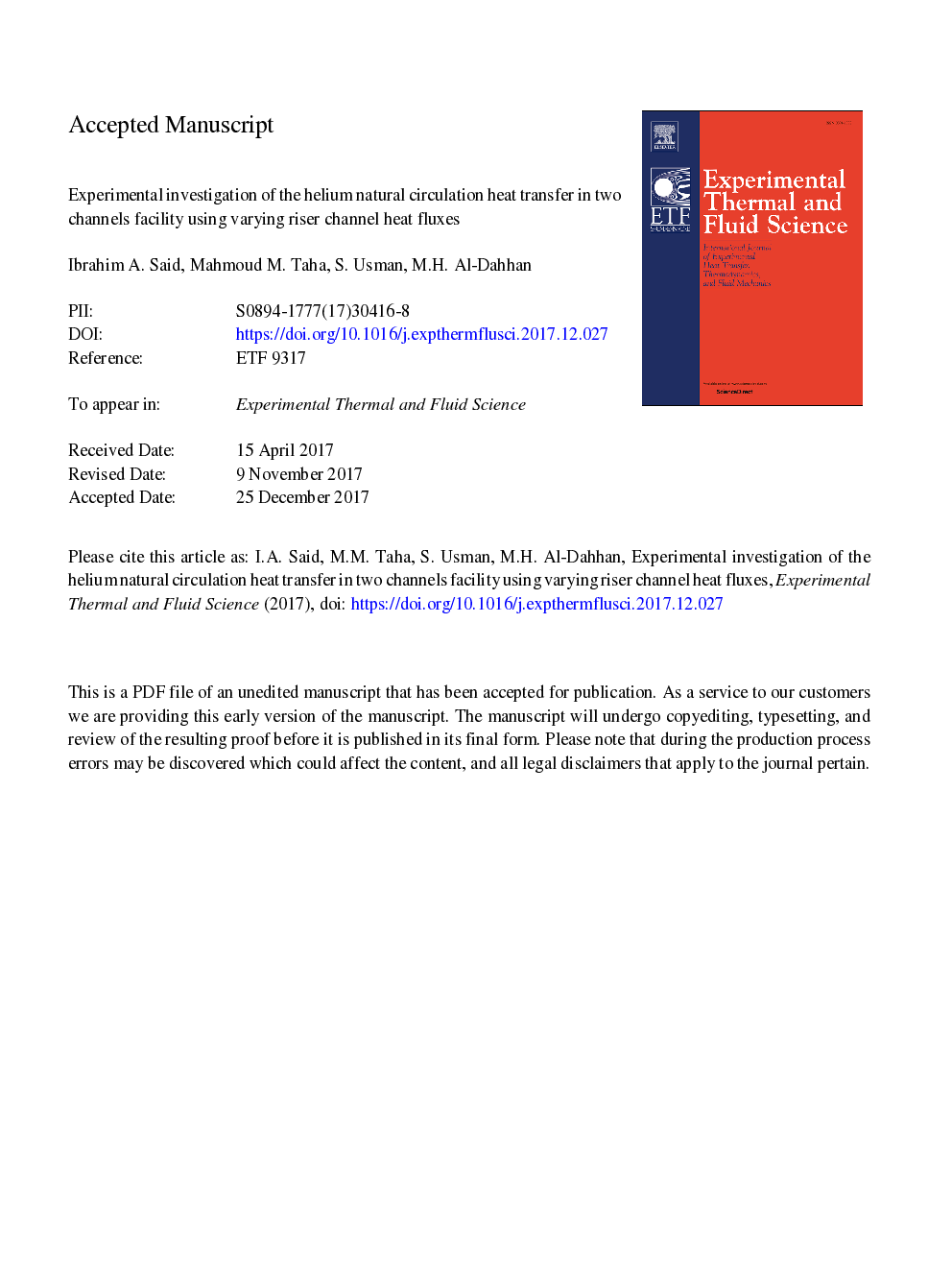| Article ID | Journal | Published Year | Pages | File Type |
|---|---|---|---|---|
| 7051794 | Experimental Thermal and Fluid Science | 2018 | 41 Pages |
Abstract
Natural circulation is considered an important passive safety aspect of the prismatic block gas cooled reactor during accident scenarios. Experimental investigations for helium natural circulation heat transfer in a scaled down separate-effects dual-channel facility have been performed at Multiphase Reactors Engineering and Applications Laboratory (mReal). The current facility consists of two channels (riser and downcomer) for coolant flow between upper and lower plena. In the present study, the riser channel is heated uniformly using an electric heater, and the downcomer channel is cooled uniformly using a heat exchanger with chilled water to initiate natural circulation. Intensity of natural circulation heat transfer along the riser and downcomer channels is investigated at different levels of constant heat fluxes ranging from 860â¯W/m2 to 2293â¯W/m2 at 413.7â¯kPa using sophisticated a noninvasive heat transfer probe. The heat transfer data in terms of the local heat transfer coefficient, the local wall surface, and helium temperatures are collected at different axial and radial locations. Also, the local Nusselt numbers are estimated along the two channels. Results confirm that the heat transfer coefficient and Nusselt number values increase as the heat fluxes increase due to increased convection currents. Average riser wall surface temperature increased by 84% when heat fluxes increase from 860â¯W/m2 to 2293â¯W/m2. Also, small variations in the temperatures of the wall surface and helium are observed along the downcomer channel due to the large volume of the upper plenum. A reversal in the direction of heat transfer close to the outlet of the riser channel (Z/Lâ¯=â¯0.956) is observed, as well as a reduction in the wall surface temperature due to co-circulation. The heat transfer reversal being reported here is very significant and would have profound effects on the overall design of the natural circulation systems. The radial temperature distributions along the riser channel showed a unique peaking in the center close to the exit (Z/Lâ¯=â¯0.956). Also, the local radial variation of density, dynamic viscosity, and thermal conductivity as dimensionless values with respect to bulk values are measured along the riser channel. Results showed that the deviation of local values from the bulk values increases with increasing the magnitude of heat flux to the riser channel. The average heat transfer results in terms of Rayleigh number and Nusselt number, when compared with previous literature correlations, showed a similar qualitative trend.
Keywords
Related Topics
Physical Sciences and Engineering
Chemical Engineering
Fluid Flow and Transfer Processes
Authors
Ibrahim A. Said, Mahmoud M. Taha, S. Usman, M.H. Al-Dahhan,
